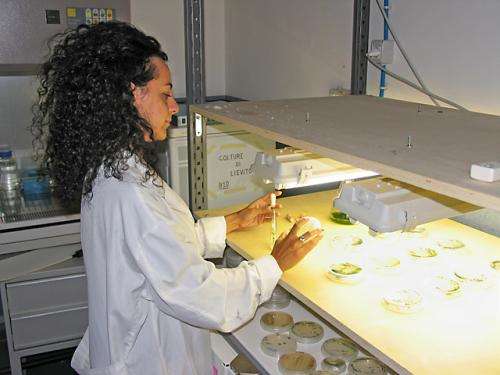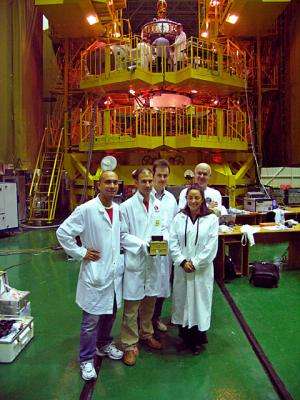Sending algae into space to probe plants in extreme environments

It may sound like the opening scene in a low-budget science fiction movie: Scientists send algae into space—some of it mutant—to see if it will grow. But an Agricultural Research Service scientist and an international team of researchers have in fact sent algae into a low Earth orbit to study the effects of space on photosynthesis and plant growth. The research, funded in part by the European Space Agency, is part of an effort to find new ways to produce food and biofuels in extreme environments.
Autar Mattoo, a plant physiologist with ARS's Sustainable Agricultural Systems Laboratory in Beltsville, Maryland, and his colleagues placed samples of the alga Chlamydomonas reinhardtii in airtight "photo cells" and had them launched in a Russian-made Soyuz space capsule from the Baikonur Cosmodrome in Kazakhstan.
The C. reinhardtii, often studied as a model for photosynthesis, spent 15 days in orbit getting doses of cosmic radiation while under light and temperature conditions that would ensure growth on earth. Four mutants of C. reinhardtii with alterations in an important gene were also sent up. Mattoo and his colleagues from the National Research Council of Italy, based in Rome, and Martin-Luther University in Wittenberg, Germany, exposed the same control and mutant algae to similar conditions in an Earth-based laboratory to compare results.
During photosynthesis in normal conditions, a protein-pigment complex known as "Photosystem II" (PS II) must constantly be repaired to fix damage caused by sunlight and ultraviolet radiation. As part of that repair process, a protein known as "D1" is continuously being replaced. Research has shown that mutations of the D1 protein in the PS II complex can either increase or decrease photosynthetic activity.

With this study, the researchers wanted to assess the effects of microgravity, cosmic rays, high-energy particles, and the ionizing radiation of space on the PS II complex, photosynthesis, and plant growth. They also wanted to see if the effects would differ in a simple model for photosynthesis, an alga, with the D1 gene altered in specific ways.
The scientists' goal is to engineer critical components of photosynthetic machinery to increase their efficiency and stability so that one day crops will produce higher yields and grow under extreme environments. The work is considered vital to meeting future demands for crop productivity and biofuels.
They found that some aspect of the space environment inhibited the ability of the control C. reinhardtii and two of the four mutant strains to photosynthesize and grow, both in space and later when they were brought back to Earth. However, two other mutant strains flourished, both in space and when they returned. The results, published in PLOS One in May 2013, highlight the importance of the D1 protein both in photosynthesis and as a target of environmental signals.
Future research will focus on developing D1 mutants of C. reinhardtii with enhanced stability and greater capacities for photosynthesis and growth in extreme environments.
Journal information: PLoS ONE
Provided by Agricultural Research Service



















